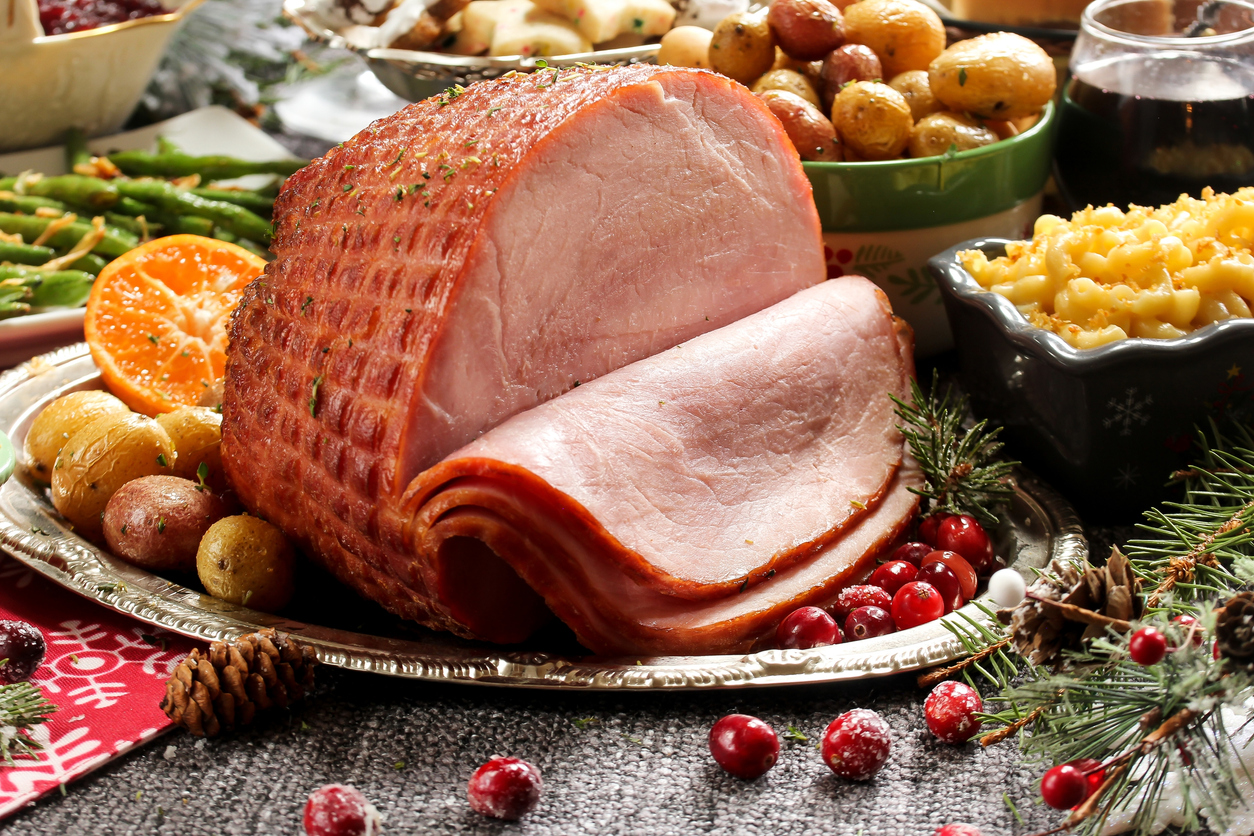Lower pork production going into the holiday season compared to last year won’t restrict the availability of all cuts, but prices could rise, said a Texas A&M AgriLife Extension Service expert in the Texas A&M College of Agriculture and Life Sciences Department of Agricultural Economics.
“The lower production is likely because several months of financial losses are beginning to take their toll on pork production,” said David Anderson, Ph.D., AgriLife Extension agricultural economist, Bryan-College Station. “While production efficiency — more pigs per litter — have offset fewer sows, it looks as though fewer sows farrowing is starting to show up in a reduced amount of hog slaughter and overall production.”
Retail hams, at $4.60 per pound in September, were 3 cents per pound higher than last September. But that was the lowest retail price since June.
Now, Anderson said, as the holidays approach, ham demand and associated wholesale prices are increasing. Wholesale 23-27-pound trimmed hams have hit $0.95 per pound, their highest price in several months.
Ham’s popularity second only to turkey
Ham is the most popular holiday dinner protein after turkey, said Davey Griffin, Ph.D., AgriLife Extension meat specialist in the Department of Animal Science, Bryan-College Station.
“Although available year-round, 70% of ham sales are recorded in the current 13-week holiday season,” Griffin said. “To provide and accommodate holiday ham sales, retailers ‘book’ holiday hams months in advance to take advantage of lower pricing that allows many to include hams in their holiday features.”
Griffin said that according to the U.S. Department of Agriculture data, there should be no problem finding holiday ham or other pork selections for purchase.
The National Pork Board estimates approximately 318 million pounds of ham will be consumed on Christmas.
When it comes to buying a holiday ham, Griffin said the choices have certainly risen over time, with consumers opting for both traditional and new ham types and flavors.
“Bone-in hams — whole, butt and shank halves — still lead consumer choices,” he said. “But spiral sliced and boneless whole, half and quarter hams are available to consumers not wanting the volume, lacking slicing skills or trying to avoid the added time involved with cooking bone-in counterparts.”
Griffin said those marketing and selling hams have also developed additional flavors to satisfy consumers’ growing interests. In addition to traditional hickory-smoked and brown sugar- flavored hams, consumers may now find options such as honey, black forest, maple, applewood, salted caramel or even pineapple-flavored hams or glazes.




